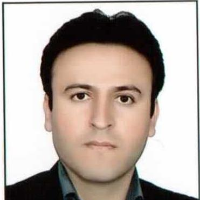Recognition of Cold Waves and Spatiotemporal over Iran
Author(s):
Abstract:
Extended abstract 1- Introduction The increase in the global mean temperature during the twentieth century, in particular over the last 30 years, has provided a strong incentive for investigations of climate change. Climatic and weather hazards are amongst the most deadly and destructive natural disasters worldwide, resulting in loss of life, severe damage and large economic and societal losses (Nutter 1999; Su et al. 2006). Those natural and human effects are mainly triggered by shifts of frequency and intensity of extreme weather conditions related to temperature, precipitation, or other aspects of climate, rather than changes of mean climate (Katz and Brown 1992; Plummer et al. 1999). Heat or cold waves are characterized by the occurrence of a sequence of days with high or low values of temperature. These waves have significant impacts in terms of their socioeconomic effects on health, agriculture, forest fires, and the production and consumption of energy (SIAM, 2002; García-Herrera et al., 2005; Pereira et al., 2005; Trigo et al., 2005). The aim of this study is investigation and recognition of cold wave and spatiotemporal analysis over Iran. Methodology In order to recognition of cold waves in Iran the interpolated minimum daily data of Asfezari Data base during 1/1/1962 to 31/12/2004. The data matrix with dimension15706 7187 has been created that located on the columns pixels and on the rows are days. In this study, by 6 indices that calculate the intensity, duration and frequency of cold waves, the characterizations of the cold waves in Iran has been investigated. The indices were based on the 10, 5 and 1 percentiles. The indices calculated for any pixels over Iran. Then the significant of trends of indices investigated by nonparametric Mann-Kendal method. The slope of trend on the pixels that have trend in 95% confidence level calculated by linear method. The programs of the calculation has been written in Matlab software environment and the maps has been drawn by Surfer software. Table1. Cold wave indices summary. The T1 value is defined as the 10, 5, 1th percentile value of minimum temperature based on the entire data record(1/1/1962-31/12/2004) No Index name Definition Unit 1 10,5, 1P value The value of the 10, 5 and 1th percentile minimum temperature for each year °C 2 Number of runs The number of runs of consecutive days(1or more) over the T1 value per year Day 3 Average run length The average length of a run of consecutive days over the T1 value per year Day 4 Maximum run length The longest run of consecutive days over the T1value per year Day 5 Minimum temperature index The mean of the warmest three consecutive minimum temperatures per year °C 6 Cold Spell Duration Index Annual count of days with at least 6 consecutive days when Minimum temperature<10th percentile of the 1971-2000 period Day Discussion The results of nonparametric Mann-Kendal test on the whole indices showed that the frequency of cold waves is decreasing during the study period over the more extent of the area of Iran. Not only the frequency of cold waves has been decreased but also the intensity and duration of cold waves has been decreased during the study period. The decreasing value of the frequency of cold waves has been observed on the low elevation, plains and flats. On the high elevation the trend of cold waves is positive but the extent percent over Iran is very small. Conclusion The environment and ecosystems adapted themselves with the normal and long term circumstances and the anomalies and turbulence occurrence result in unpleasant consequences. The decreasing trend of more durable cold waves is higher than low durable cold waves. The decreasing of occurrence, duration and intensity of cold waves results in melting of snow cover over the high elevation, decreasing the diurnal temperature range, increasing the evaporation and increasing the plants and animals diseases.
Keywords:
Language:
Persian
Published:
Geography and Environmental Planning, Volume:25 Issue: 2, 2014
Pages:
253 to 268
magiran.com/p1285668
دانلود و مطالعه متن این مقاله با یکی از روشهای زیر امکان پذیر است:
اشتراک شخصی
با عضویت و پرداخت آنلاین حق اشتراک یکساله به مبلغ 1,390,000ريال میتوانید 70 عنوان مطلب دانلود کنید!
اشتراک سازمانی
به کتابخانه دانشگاه یا محل کار خود پیشنهاد کنید تا اشتراک سازمانی این پایگاه را برای دسترسی نامحدود همه کاربران به متن مطالب تهیه نمایند!
توجه!
- حق عضویت دریافتی صرف حمایت از نشریات عضو و نگهداری، تکمیل و توسعه مگیران میشود.
- پرداخت حق اشتراک و دانلود مقالات اجازه بازنشر آن در سایر رسانههای چاپی و دیجیتال را به کاربر نمیدهد.
In order to view content subscription is required
Personal subscription
Subscribe magiran.com for 70 € euros via PayPal and download 70 articles during a year.
Organization subscription
Please contact us to subscribe your university or library for unlimited access!


